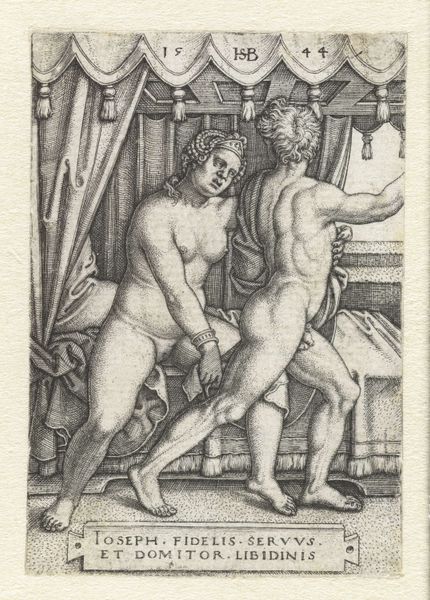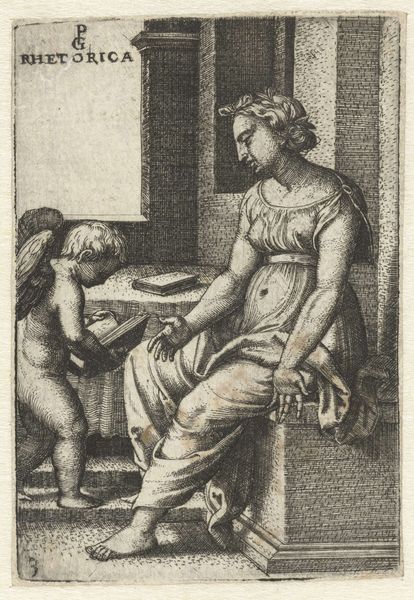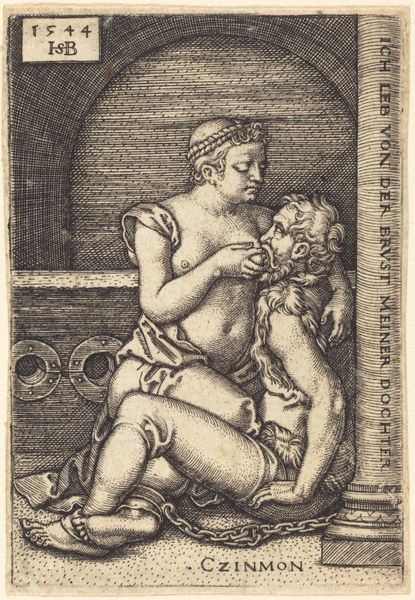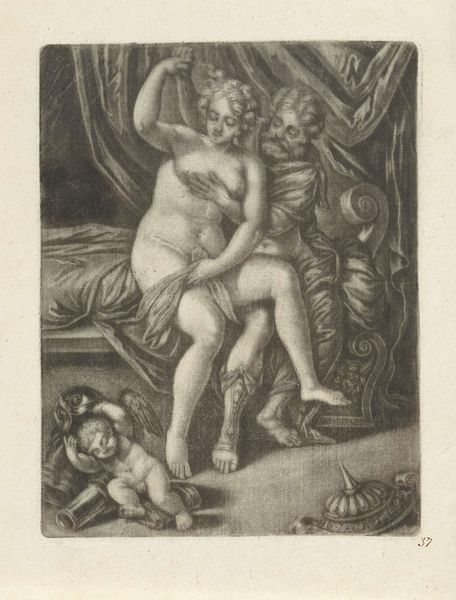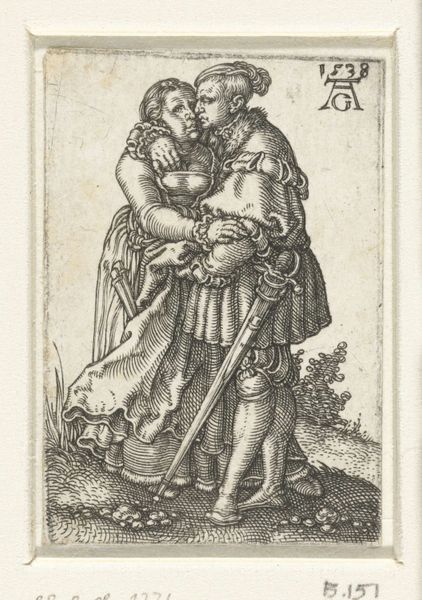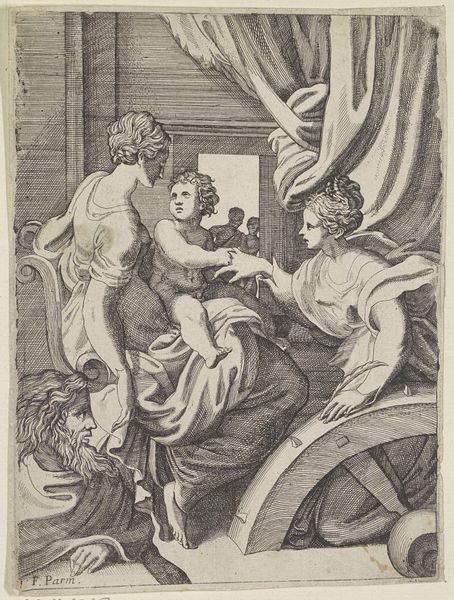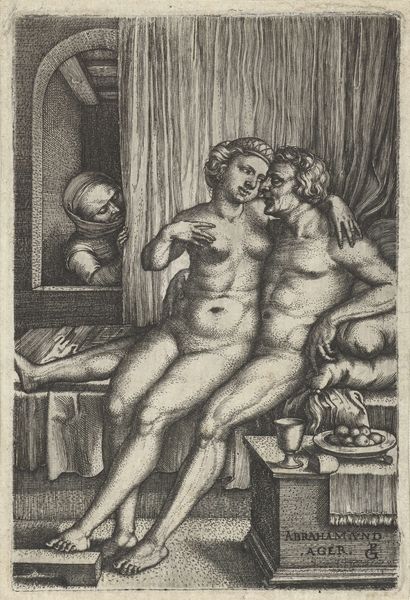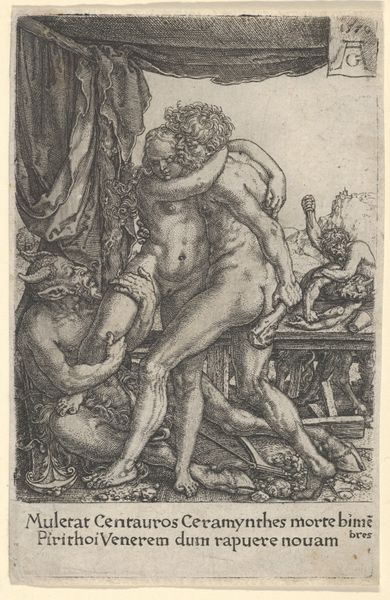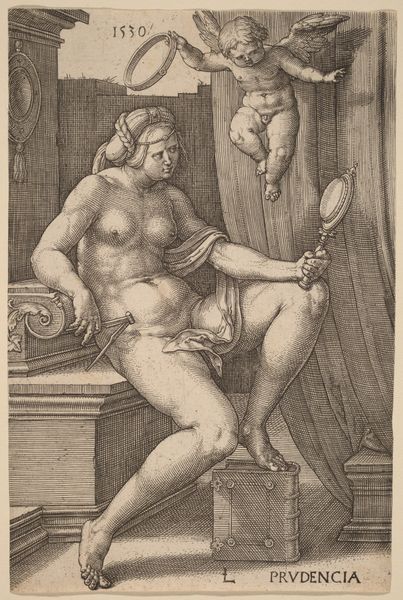
print, engraving
#
narrative-art
# print
#
figuration
#
pencil drawing
#
italian-renaissance
#
nude
#
engraving
Dimensions: height 59 mm, width 45 mm
Copyright: Rijks Museum: Open Domain
Curator: Sebald Beham's engraving, "Pero zoogt geketende Cimon in gevangenis," created in 1544, presents us with a curious scene, doesn’t it? Editor: Yes, my first reaction is a sense of disquiet. There’s a certain starkness in the composition that speaks to the fraught dynamic at play here—confinement and desperation are quite palpable. Curator: Indeed. Beham’s masterful use of line creates strong tonal contrasts, effectively emphasizing the forms of the figures. Note the architectural backdrop composed of these rounded archways, seemingly hemming them in. Editor: This is such a compelling Renaissance artwork and is based on a story illustrating Roman "caritas." Pero sustains her imprisoned, starving father, Cimon, with her own breast milk. It powerfully evokes themes of sacrifice and female agency within patriarchal structures. Curator: From a formal perspective, notice how the curves of Pero's body echo those arches, creating a visual harmony but also a sense of enclosure. The use of light and shadow directs the eye, making Pero's act all the more intimate. I find it's very successful as an artwork. Editor: But let's consider the socio-political dimensions of this portrayal. Pero’s selfless act of transgression exposes not only her personal rebellion against authority but serves as a condemnation of inhumane justice. By providing her body, she reclaims agency from those attempting to dehumanize her father. Curator: Certainly. And while the engraving might read as a testament to a daughter’s devotion, one cannot ignore the artist’s delicate use of line and shadow to emphasize the texture of skin and folds of fabric that lend sensuality to what is ultimately, I would say, an act of survival. Editor: I concur, however that in reclaiming these narratives through feminist interpretation, we can excavate previously dismissed contributions by female and queer artists, disrupting long-standing biases in art history. Curator: It makes me think of what impact a viewer in 1544 would think looking at this work in real time, considering the themes and subjects available to them. It must have had an entirely different message. Editor: Ultimately, Beham's piece becomes a springboard for exploring intersectionality, gender, power, and the politics inherent in human relationships, resonating through centuries and offering many perspectives to unpack and interpret.
Comments
No comments
Be the first to comment and join the conversation on the ultimate creative platform.



